Disclaimer
Jean Béraud
French Impressionist Painter
1849 - 1936
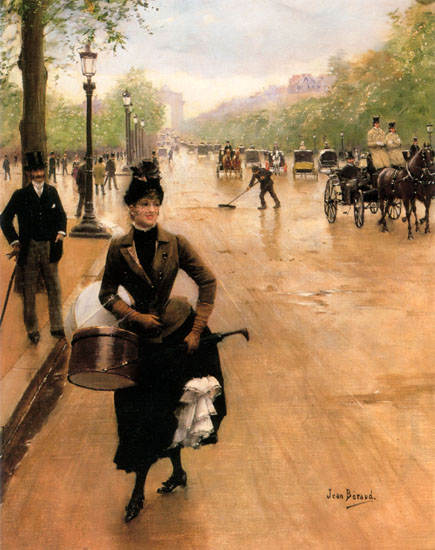
Jean Béraud:
The Milliner on the Champs Elysées
Jean Béraud (born in Saint Petersburg and died in Paris) was a French Impressionist painter and commercial artist.
Béraud's father (also called Jean) was a sculptor and was likely working on the site of Saint Isaac's Cathedral at the time of his son's birth. Béraud's mother was one Geneviève Eugénie Jacquin; following the death of Béraud's father, the family moved to Paris. Béraud was in the process of being educated as a lawyer until the occupation of Paris during the Franco-Prussian War in 1870.
Béraud became a student of Léon Bonnat, and exhibited his paintings at the Salon for the first time in 1872. However, he did not gain recognition until 1876, with his On the Way Back from the Funeral. He exhibited with the Society of French Watercolorists at the 1889 World's Fair in Paris. He painted many scenes of Parisian daily life during the Belle Époque in a style that stands somewhere between the academic art of the Salon and that of Impressionists. He received the Légion d'honneur in 1894.
Béraud's paintings often included truth-based humor and mockery of late 19th century Parisian life, along with frequent appearances of biblical characters in then contemporary situations. Paintings such as 'Mary Magdalene in the House of the Pharisees' aroused controversy when exhibited, because of these themes.
Mary Magdalene in the house of Simon the Pharisee
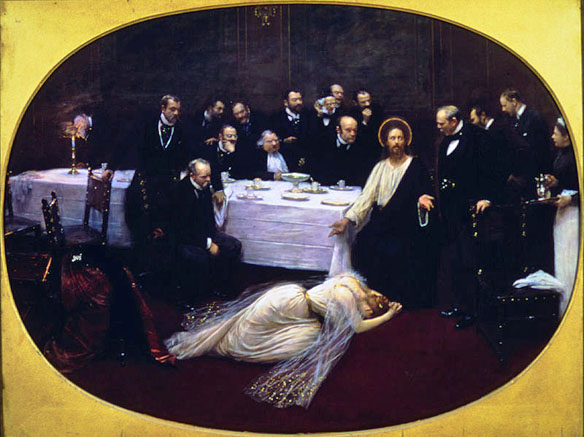
This interesting and technically accomplished painting pulls the event in Luke 7:36-50 into the then-modern world. Only the figure of Jesus is timeless. All the others, including the startled maid at far right, are in modern dress. The painting was controversial when it first appeared, because people rightly suspected that Beraud was trying to make them uncomfortable by confronting them with their own failings, their own hypocrisy. Many of the well-heeled men in the painting would have had mistresses. Now they were confronted with reality, with raw human suffering, and they did not particularly like it.
Towards the end of the 19th, Béraud dedicated less time to his own painting but worked on numerous exhibition committees, including the Salon de la Société Nationale.
Béraud never married and had no children. He is buried in Montparnasse Cemetery beside his mother.
From: Wikipedia
Examples of Jean Béraud's Paintings
Jean Béraud was quite varied in his subject matter. There are religious and historical scenes but what, I believe, is some of his best work comes from daily life especially in Paris. My fascination with art and artists has always been focused on people and events whether real or fictitious and imagining their thoughts or what prompted the artist to depict his/her subjects in the way they were. I guess that is what attracts us to art and makes it so unique or at least that is how it affects me.
Senex Magister
A Morning Stroll

A Vanitas - 1656
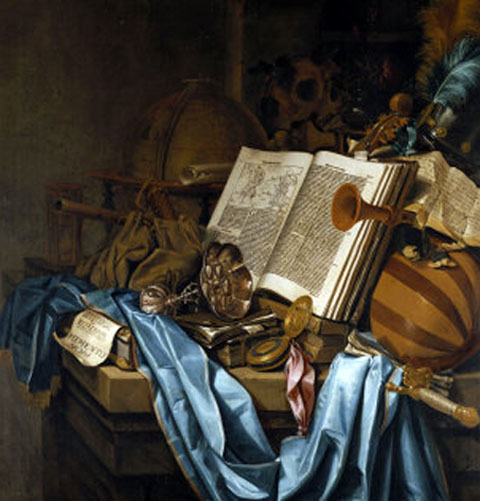
A Windy Day

After the Misdeed
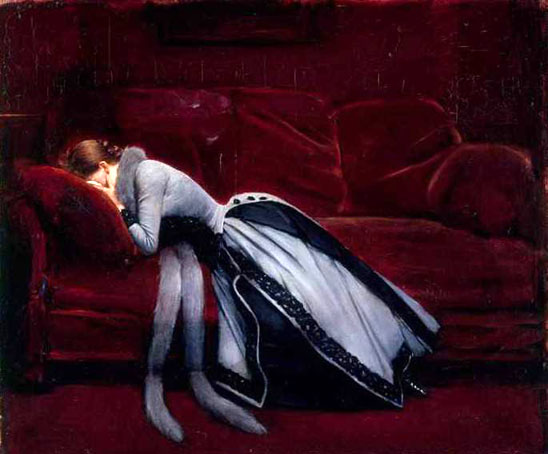
This work can be placed among the artist's genre paintings of late 19th-century Paris. Here the tone is moralizing. The subject of women who fell prey both to their own passions and to the opposite sex was popular in England and France in the 19th century.
Arc de Triomphe
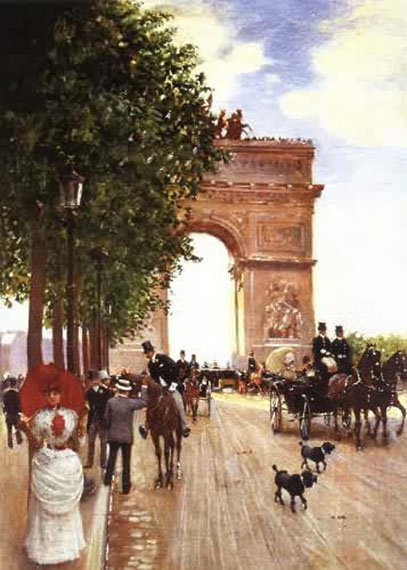
Argument in the Corridors of the Opera - 1889

Argus and Io
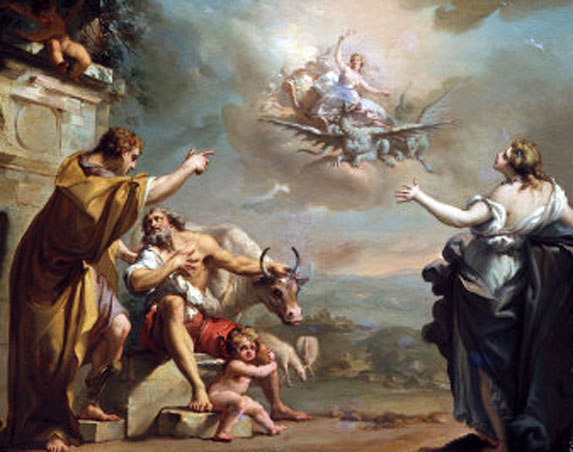
Homer's Odyssey (ca. 800 BCE) alludes to the story of Argus by referring to Hermes as 'the guide, the slayer of Argus'. Similar references to Argus appear in Hesiod's Works and Days (ca. 750-700 BCE) and many of the Homeric Hymns, including those to Aphrodite, Apollo, Hermes, and Demeter (ca. 700-500 BCE). Hermes's epithet 'Argeiphontes' means 'slayer of Argus.'
The myth's outline is that Zeus had seduced Io when Hera arrived on the scene. Zeus transformed Io into a cow to hide his infidelity, but Hera was not deceived. When Hera asked, Zeus was obliged to give her the cow. Hera appointed her servant Argus to guard the cow, and Hermes, at Zeus' command, killed Argus. The detail omitted in this summary varies depending on which source is referenced. Two prominent sources of the myth of Argus' death are Aeschylus's play Prometheus Bound (c. 500 BCE) and Ovid's Metamorphoses (ca. 8 CE).
In Prometheus Bound Io, as a cow, has been wandering all over Greece desperately fleeing from a stinging gadfly ever since Hermes killed Argus. She comes upon Prometheus and relates her story in exchange for a prophecy. According to Aeschylus, the ghost of "Argus --that evil thing-- / The hundred-eyed- / Earth born herdsmen" was the gadfly sent by "Hera's curse... (to pursue Io) ever on (her) endless round". Little else is revealed about Argus in the play, as Io focuses on her wanderings. The play presents the myth in a manner that suggests it should be familiar to the audience, revealing only the details that are pertinent to the themes of the play.
Unlike Aeschylus, who assumes knowledge of the myth and omits details such as Argus' death at the hand of Hermes, Ovid tells a complete narrative of one version of this myth in the Metamorphoses. According to Ovid, Argus had "the hundred eyes / All watching and on duty round his head, / Save two which took in turn their sleep and rest". The following lines tell that Zeus dispatched Hermes to slay Argus and set Io free. Hermes sang Argus to sleep, used his magic wand to seal Argus' eyes shut, and decapitated Argus. Hera was furious about the death of her servant Argus, and "Juno (Hera) retrieved those eyes to set in place / among the feathers of her bird and filled / his tail with starry jewels", creating the eyes of the peacock. Furthermore, Hera, "before her rival's (Io's) eyes and in her mind... set a frightful Fury".
Sources with different details for the same myth are characteristic of Greek myth, which is rooted in oral transmissions. Notice that in Ovid's tale Hera does not dispatch the ghost of Argus to torment Io as a gadfly. Hera calls upon a Fury as she does in an episode in Virgil's Aeneid that recounts Hera enlisting a Fury to torture the wife of Latinus. In Prometheus Bound, Argus is the child of Gaia, but Ovid is silent on the issue of Argus's lineage. While Ovid and Aeschylus give Argus one hundred eyes, other traditions, according to Pierre Grimal, attribute one eye or four eyes to the monster Argus. Just as there are differences in the literary preservation of this myth, representations of Argus in the plastic arts may differ. For example, Ovid describes Argus with one hundred eyes in his head, but an Attic vase (c. 490 BCE) depicts Argus with eyes all over his body.
Ovid I
Armand Sylvestre - 1894
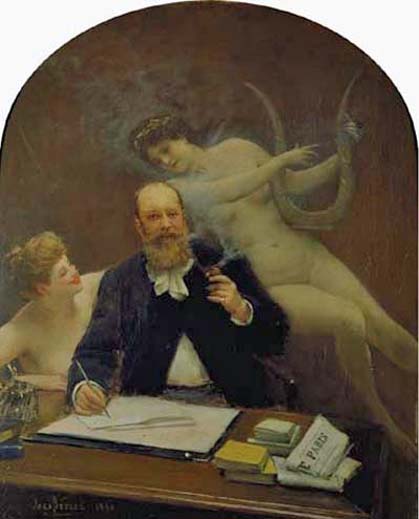
At the Cafe
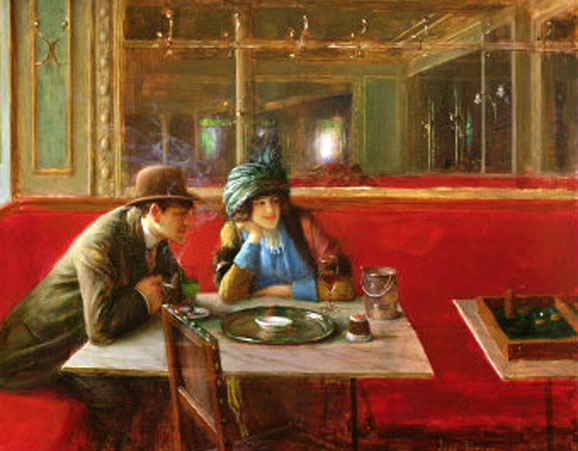
Beraud developed a reputation for painting scenes of everyday Paris like patisseries, outdoor concerts and boulevard views, and in Béraud's Au Café, a couple sits and focuses on something or someone out of view. Beraud does a fine job detailing the marble table, the half-filled glasses and wisps of smoke rising from the young man's cigarette, and by not having his couple face each other, he creates intriguing possibilities as to just what is going on between them.
Is this a first encounter or are they breaking up? Why are they so intent on some other sight? The slightly askew chair in front of their table could suggest that the man has edged from that same chair closer to the woman, or that a third party has stepped away for a moment and may be the subject of their guarded watchfulness.
Au Bistro
(aka At the Bistro)
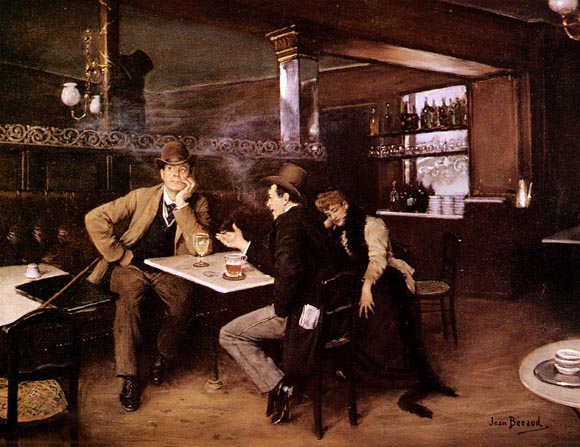
Au Cafe
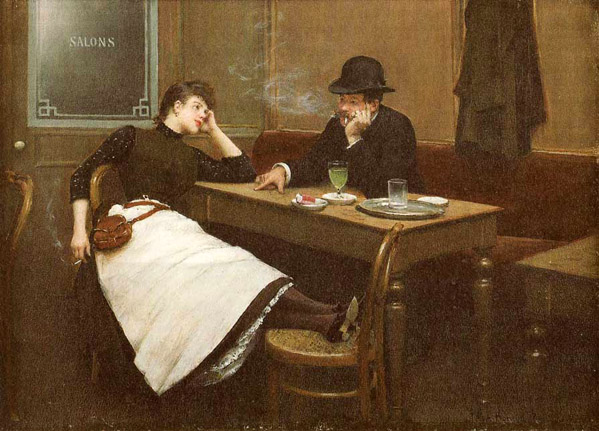
Behind the Scenes - 1889
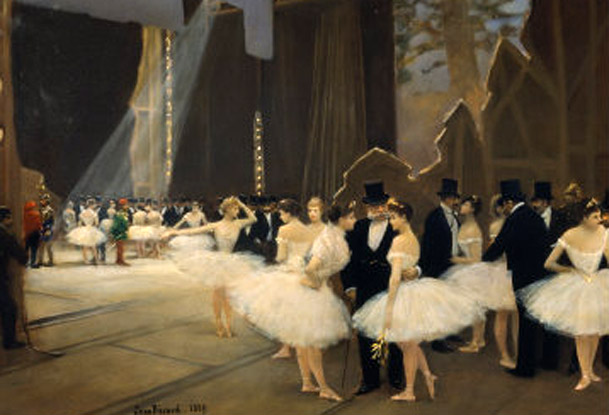
Boulevard des capucines
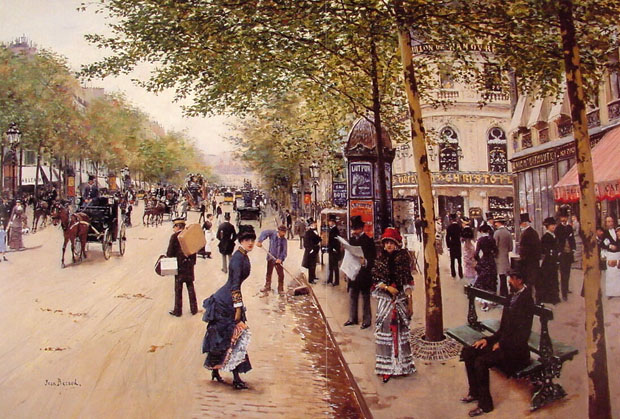
Boulevard Des Capucines at the Site of Theater Du Vaudeville - 1889
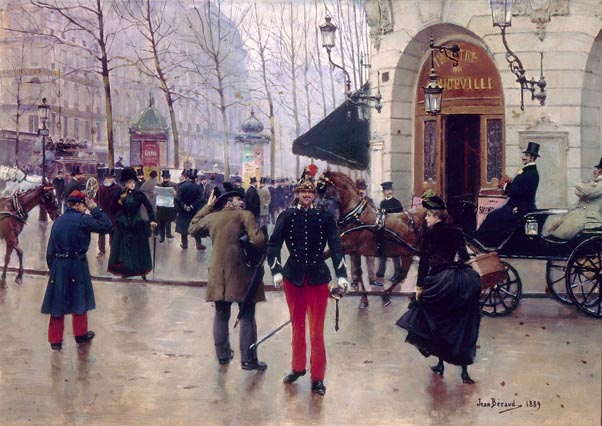
The son of a sculptor, Beraud began his career as a portrait painter but later turned his talents to capturing the magic of the daily life on the boulevards of Paris. Cultivating the company of the Franco-Russian aristocracy, he attained success and honors with his artistic achievements and was a founding member of the Societe Nationale des Beaux-Arts, Paris.
Dinner at Les Ambassadeurs
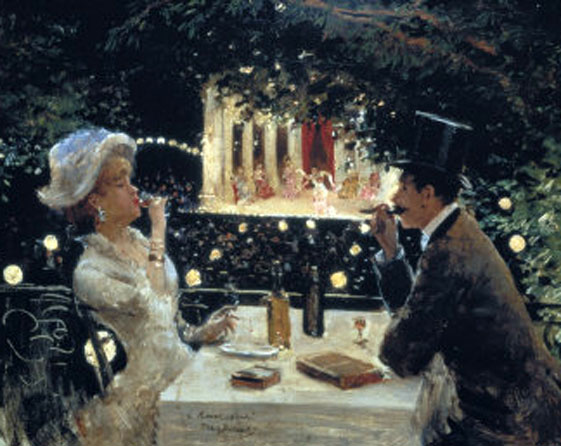
French artist Jean Béraud had an exceptional eye for detail, enhanced by the advent of photography. This vision imbued his portrayals of daily Parisian life with subtlety and elegance. Originally a student of law, Béraud transitioned to painting, remaining in his beloved, flamboyant Belle Époque city while his Impressionist contemporaries moved to the country. Béraud would often sequester himself in a taxicab to paint candid images of unsuspecting passersby and mundane, everyday activities. He later painted modernized religious themes, but is most renowned for his insightful images of the glory days of Paris.
Elegant Soiree
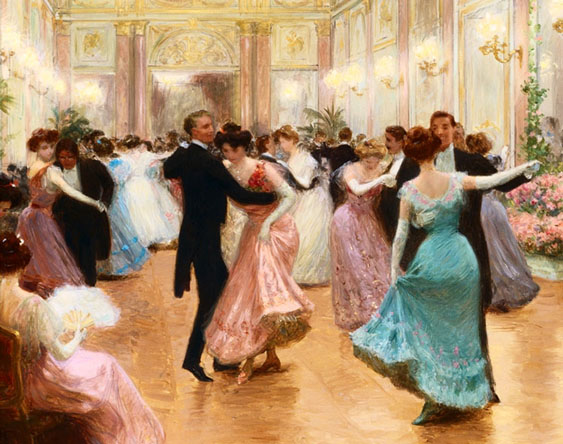
This beloved French genre painter, known best for his market scenes, turns his attention to the leisure class in this charming ballroom scene. Winner of the Bonnat Prize in 1926, a large body of his work can be seen in the Hotel de Ville in Paris.
Envole D'un Biplan Type Wright

Evening Soiree
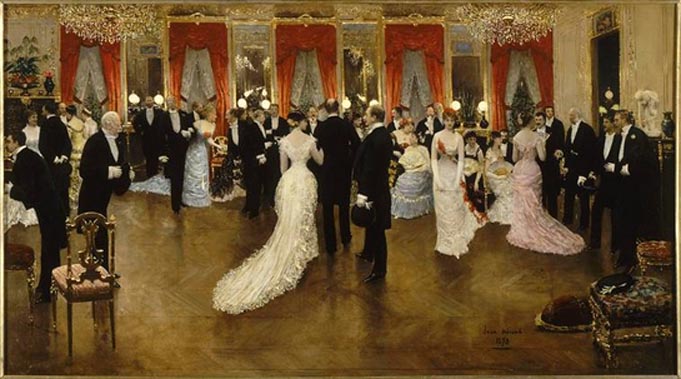
French Burlesque
(Illustrated by Jean Beraud)
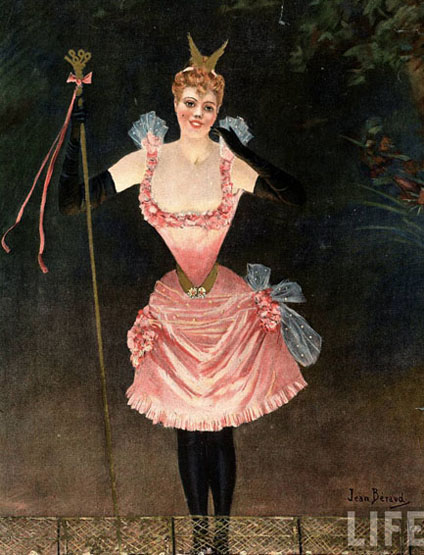
Ballerina by Jean Beraud on Cover of 'Figaro Illustre'
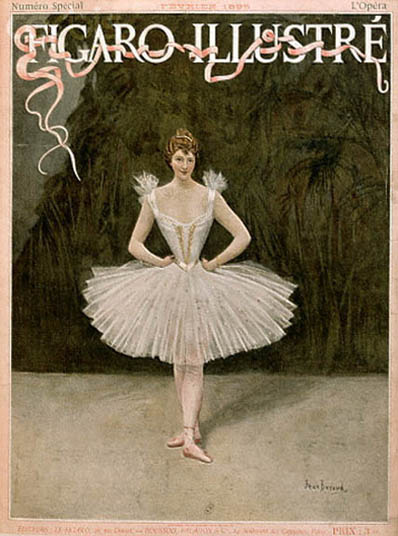
George Washington

Home Driver
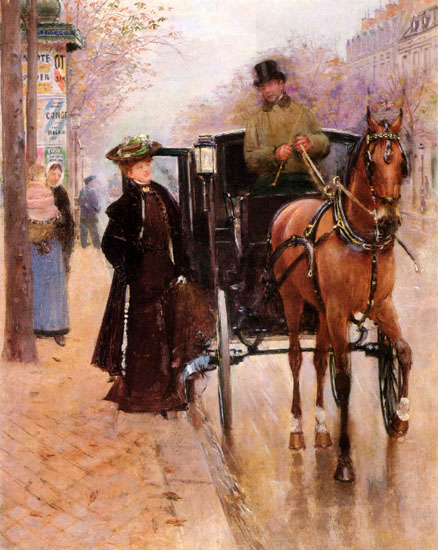
Jeune femme debout de profil a gauche a l'echarpe et au manchon
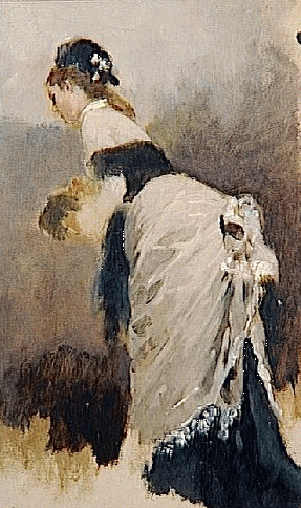
Jeune Femme Traverrsant Le Boulevard
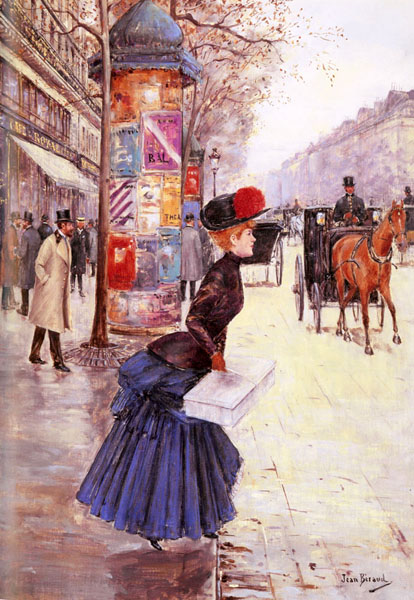
Jeune Le Cafe De Paris
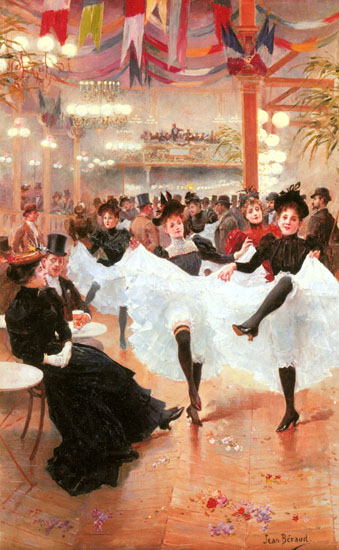
La Bastille

La Brasserie
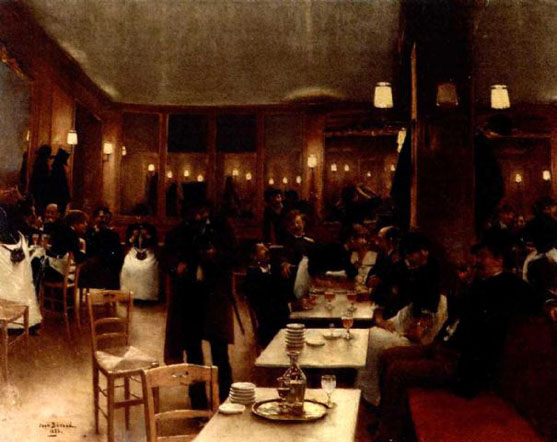
La Dame Utile
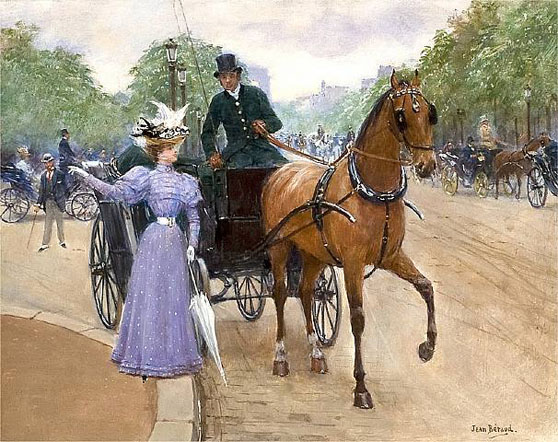
La Lettre
(The Letter) - 1908
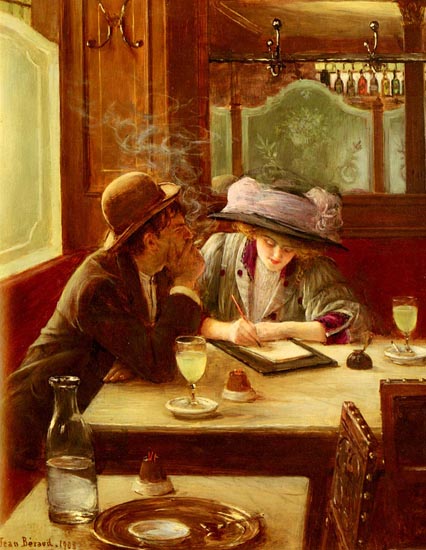
La Partie de Billard
(A Game of Billards)
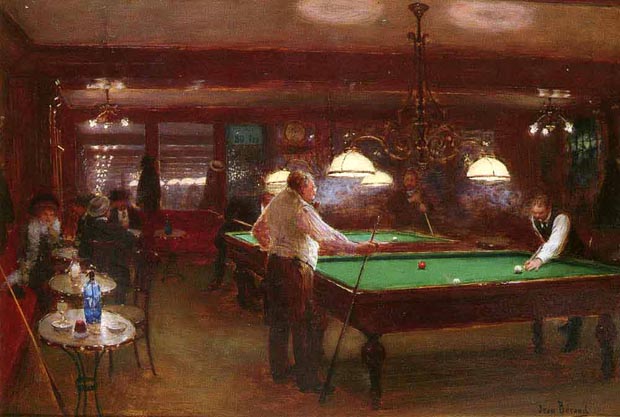
Le Billard

La Patisserie Gloppe - Champs Elysees, Paris: 1889
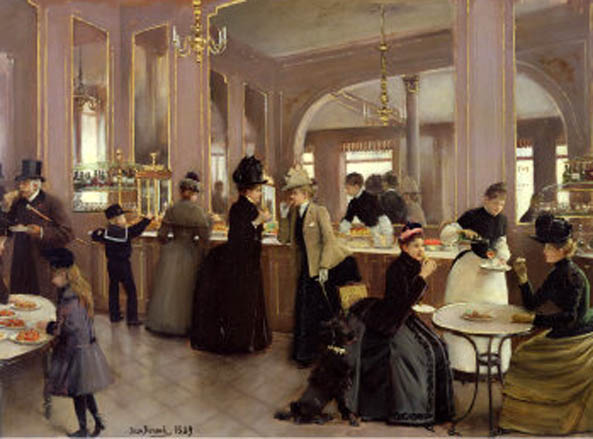
La Pierrette
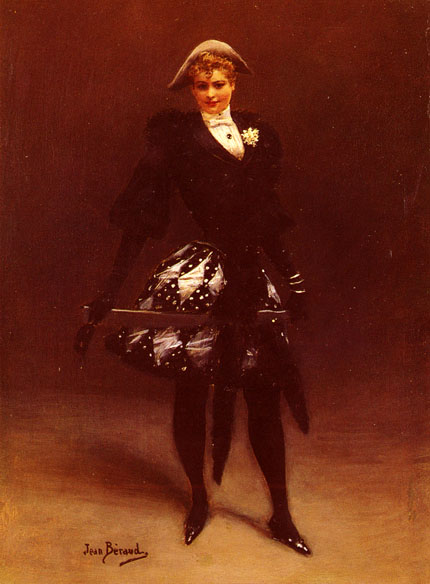
La Rue de la Paix: ca 1907
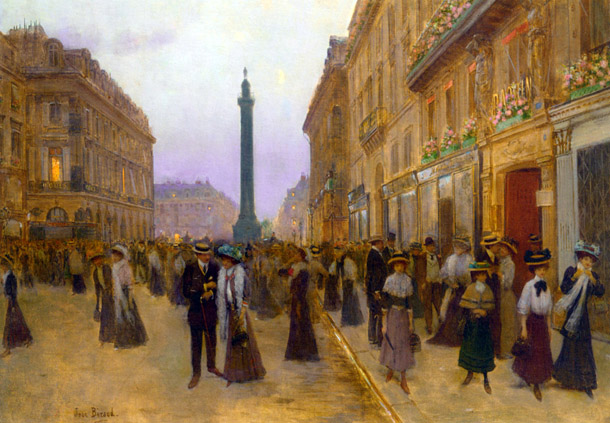
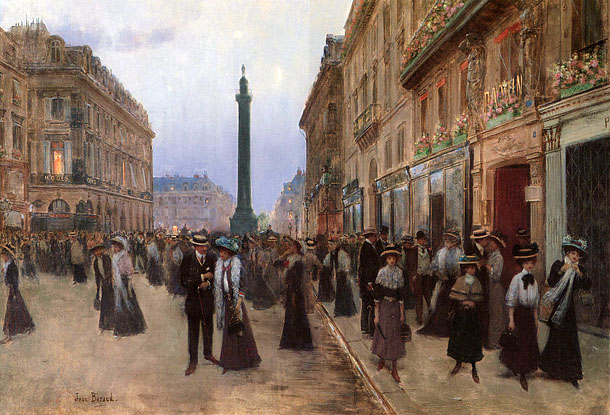
La salle de redaction du Journal des Debats
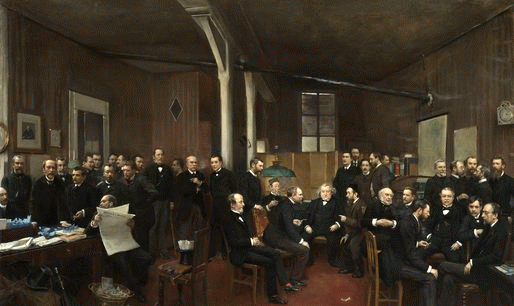
La Sortie Du Bourgeois
(The Departure of the Bourgeois)
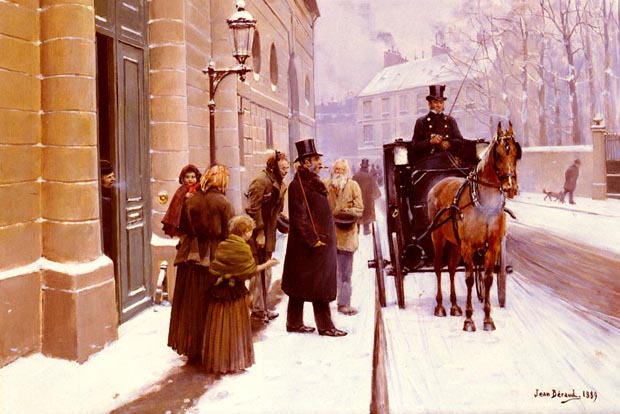
La sortie du theatre
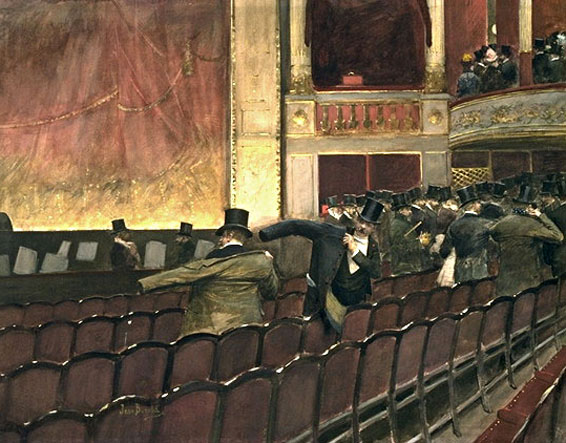
Le Bal Mabile

Le Boulevard St Denis - Paris
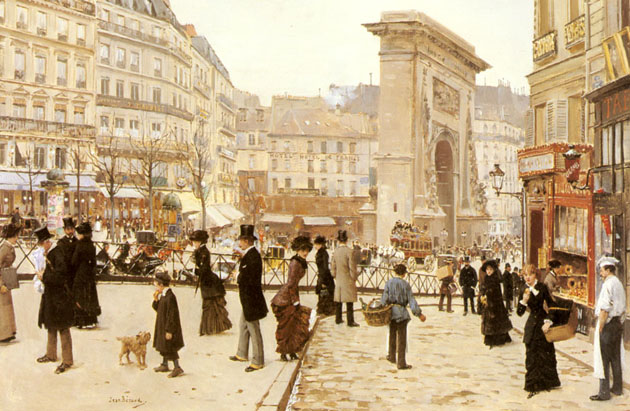
Le cercle
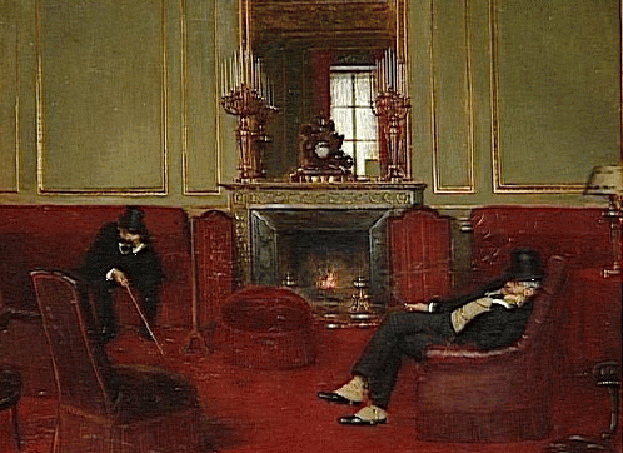
Le Chalet du cycle au bois de Boulogne
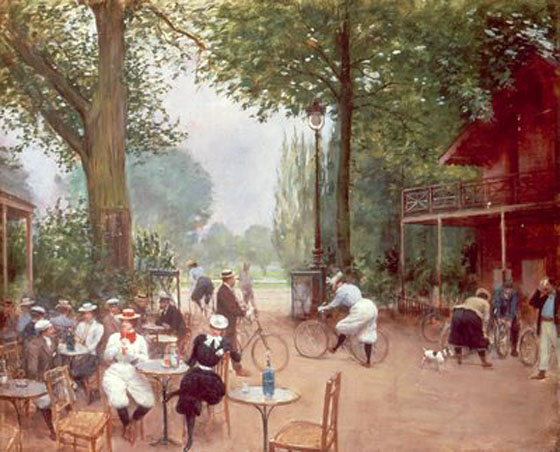
Le defile
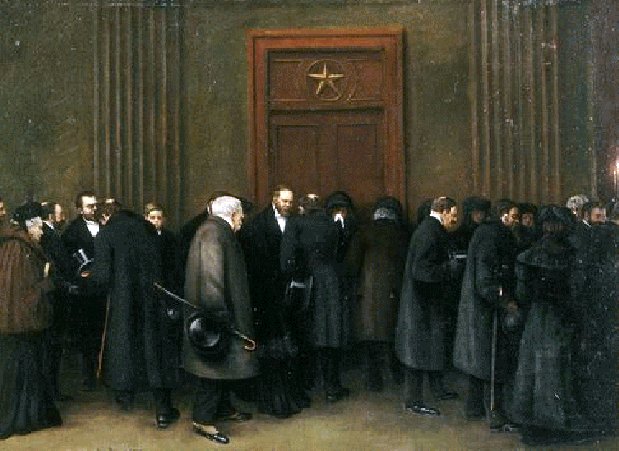
Le Promenoir aux Folies-Bergere: ca 1904
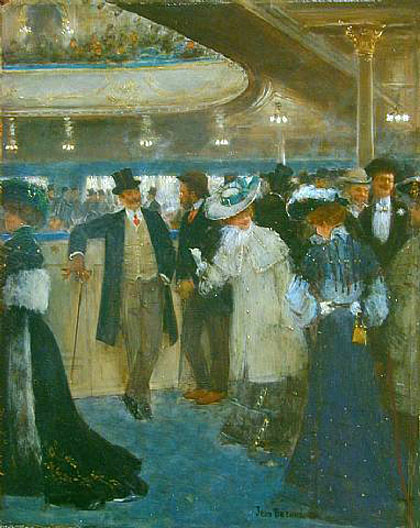
Les Grands Boulevards-Le Theatre Des Varietes
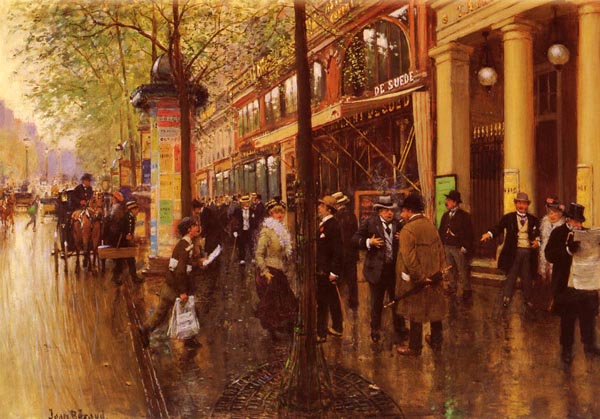
L'escrimeuse
(The Swordswoman)
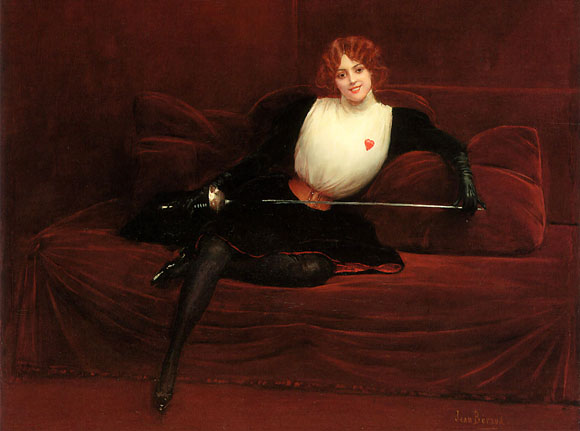
Une escrimeuse
(Woman Fencer)
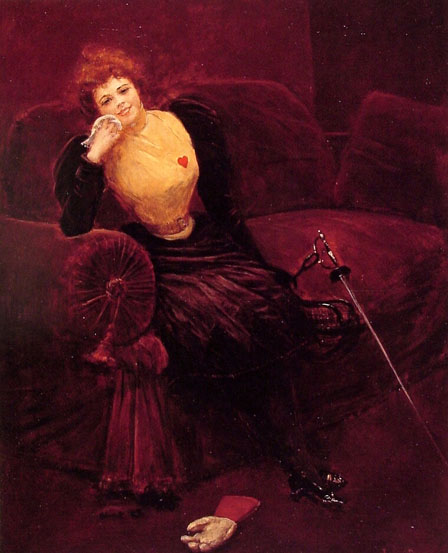
On the Boulevard
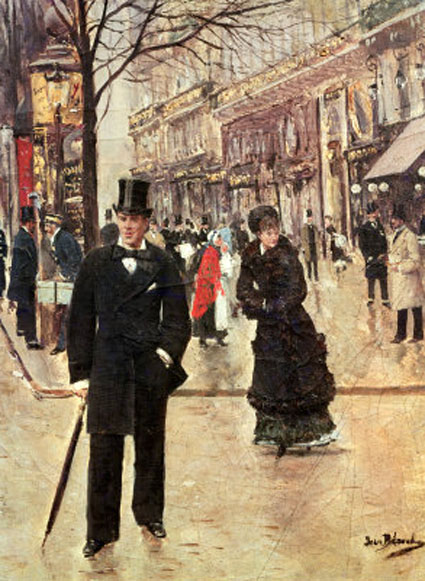
Outside the Opera - Paris: 1879
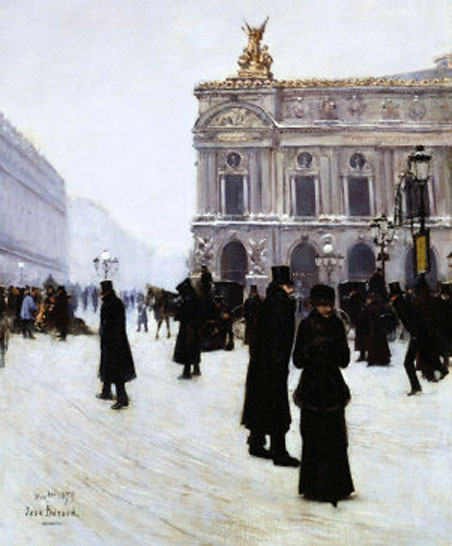
Outside the Vaudeville Theatre - Paris

Paris Patisserie: 1889

Parisienne Au Rond Point Des Champs Elysees
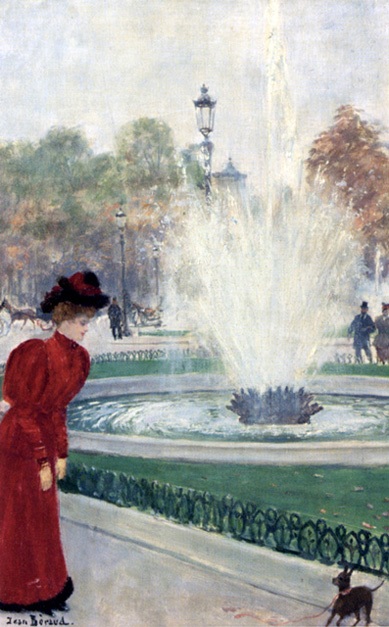
Parisienne place de la Concorde
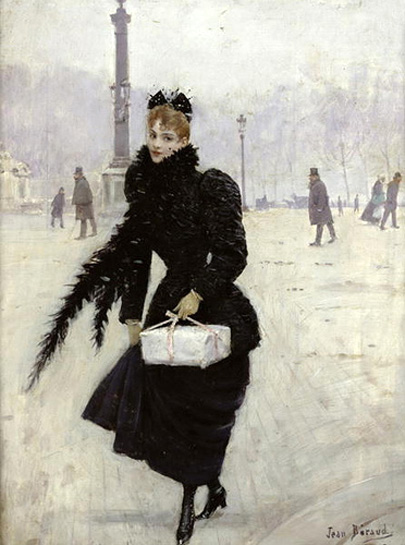
Personnages
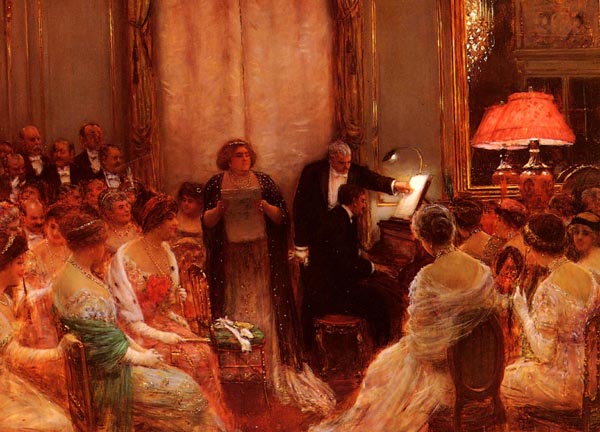
Pont des arts
(The Bridge of Art)

Portrait D'Un Homme Elegant
(Portrait of a Dandy)
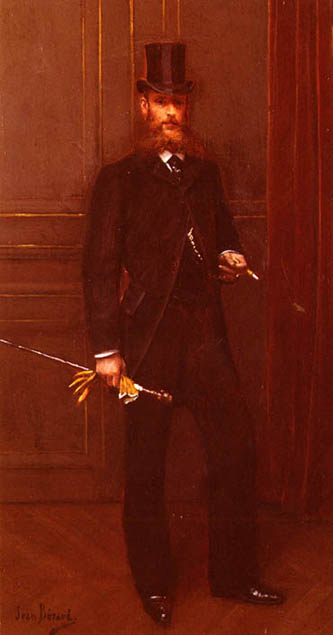
Promenade sur les quais

Prostitutes at jardin de Paris: 1905
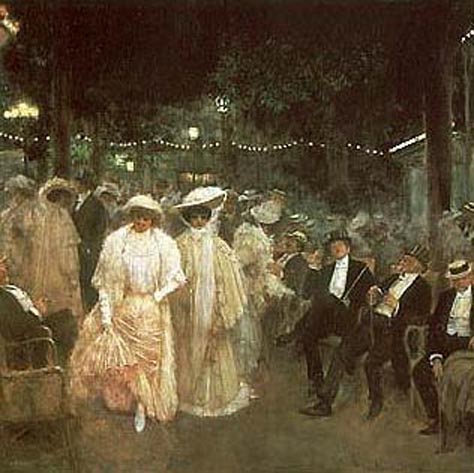
Representation at the Theatre des Varietes: 1888
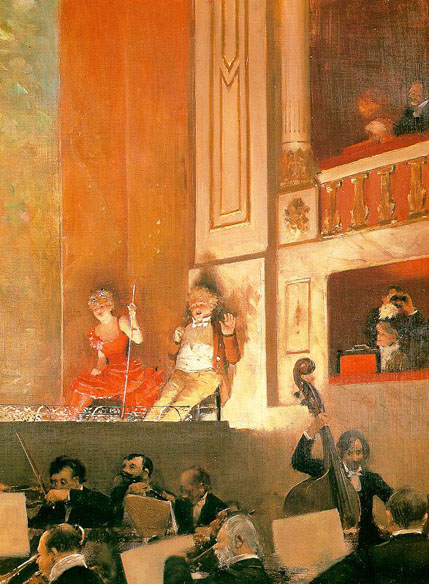
Sortant De La Madeleine, Paris
(Leaving La Madeleine, Paris)
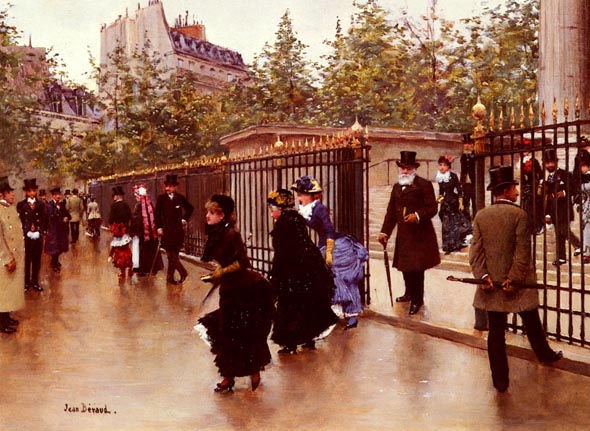
Sortie de la loge de l'Opera Leaving the Opera

Symphony in Red and Gold: 1895
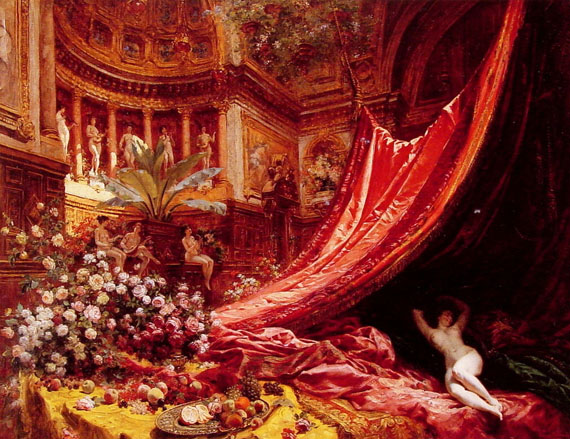
The Box by the Stalls: ca 1883
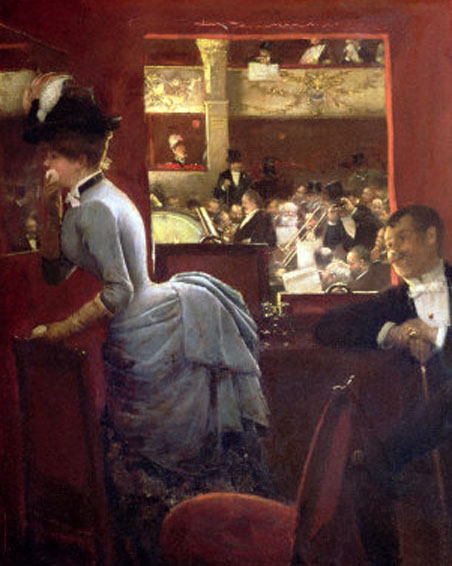
The Casino at Monte Carlo
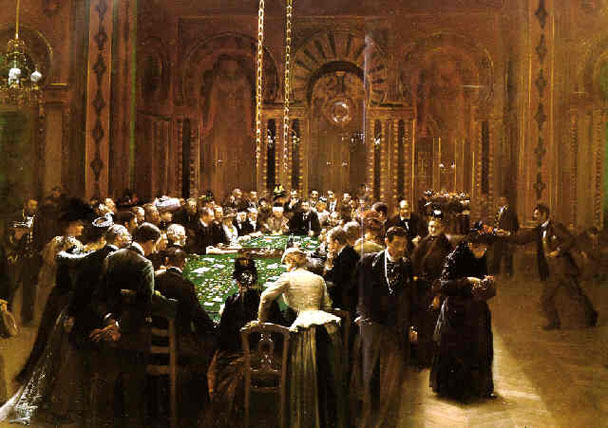
The Chalet of the Bicycle at Bois De Boulogne

The Colonne Morris: ca 1885
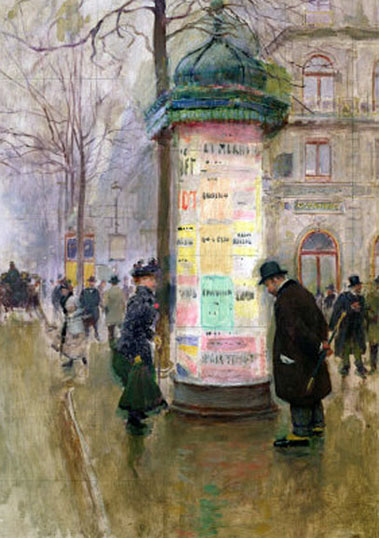
The Drinkers: 1908
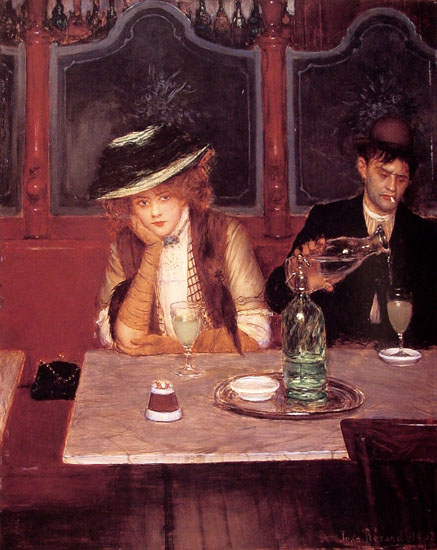
The Exit of the Students from the Condorcet Lyceum: 1903
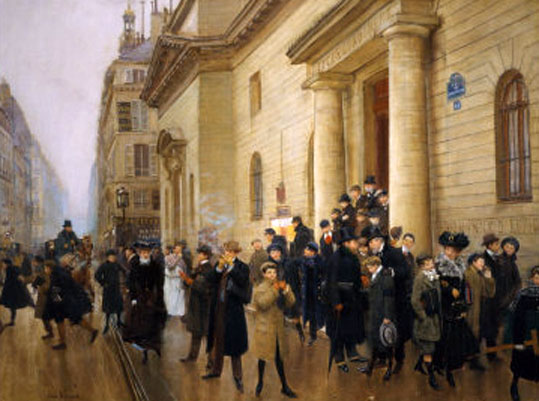
The Funeral of Victor Hugo at the Arc de Triomphe: 1885
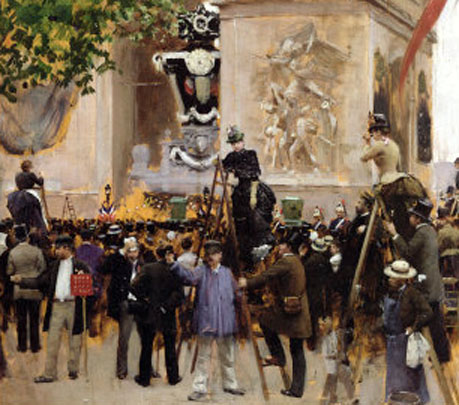
The Game Room: 1889

The Private Conversation: 1904
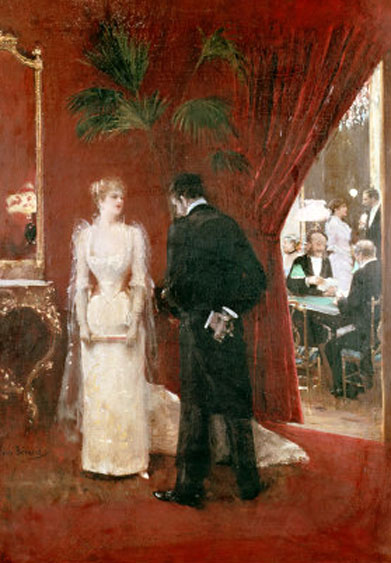
The Rape of the Sabine Women
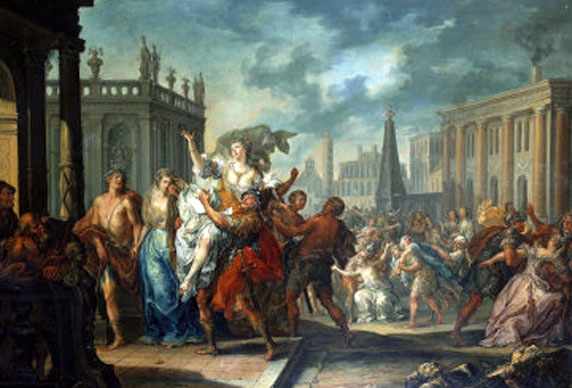
The Reception
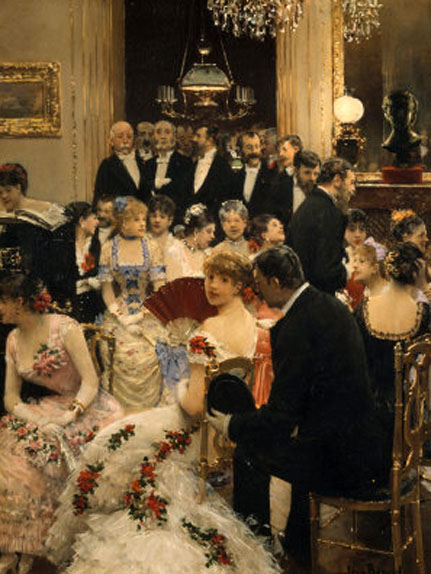
The Sack of Troy
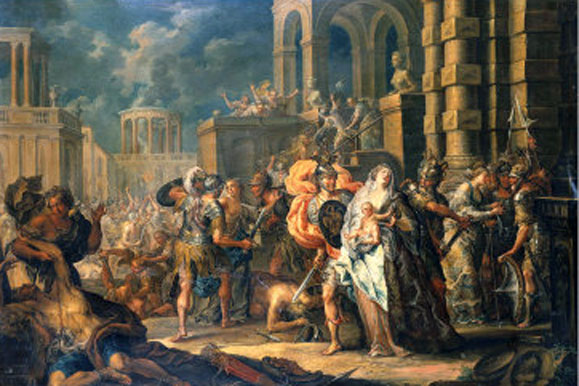
The Salon of the Countess Potocka: 1887
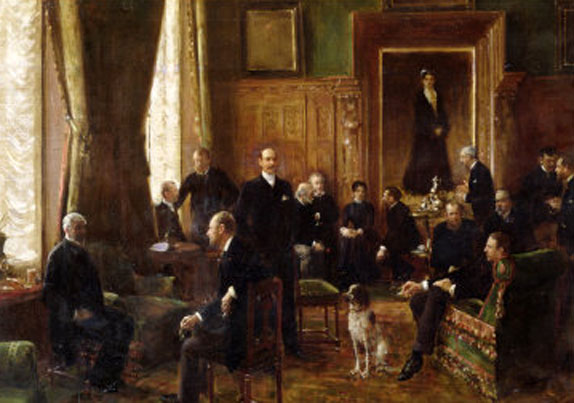
The Victoria: ca 1895

The Wait
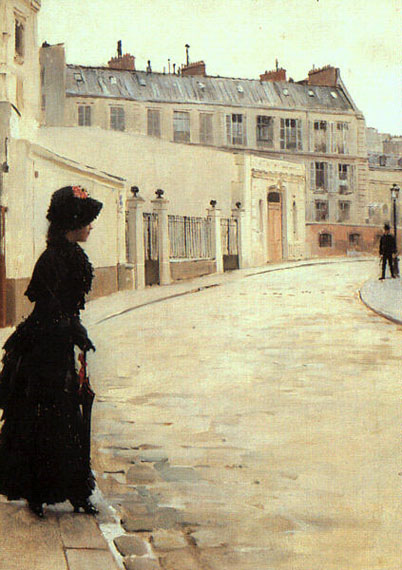
The Widower: 1910
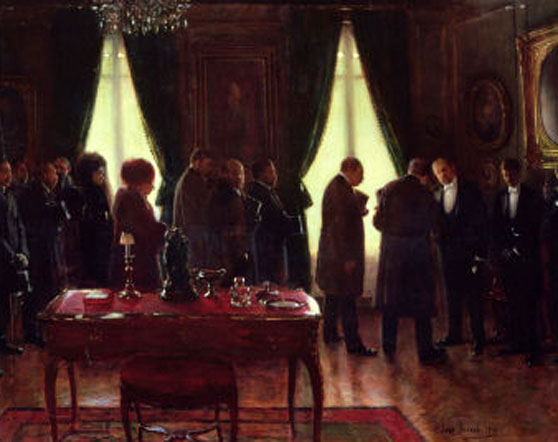
The Backgammon Players
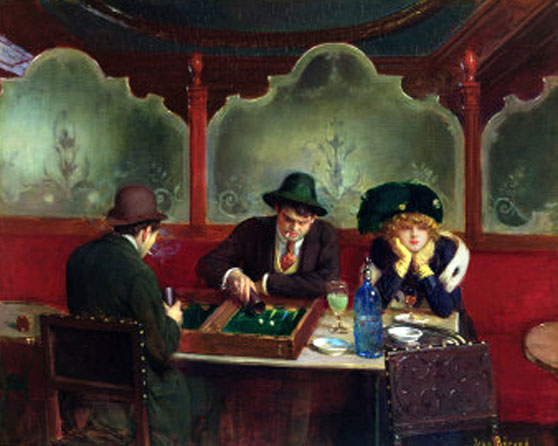
The Lobby of the Paris Opera
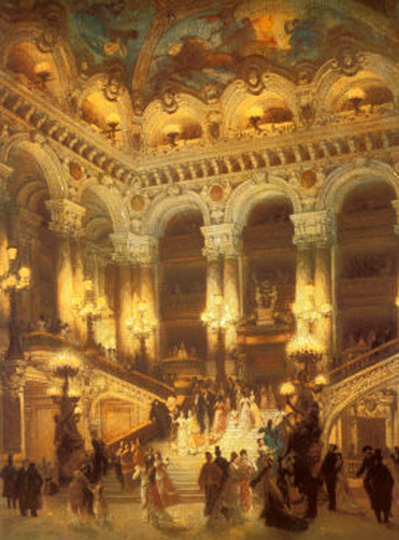
Valmy and Lea
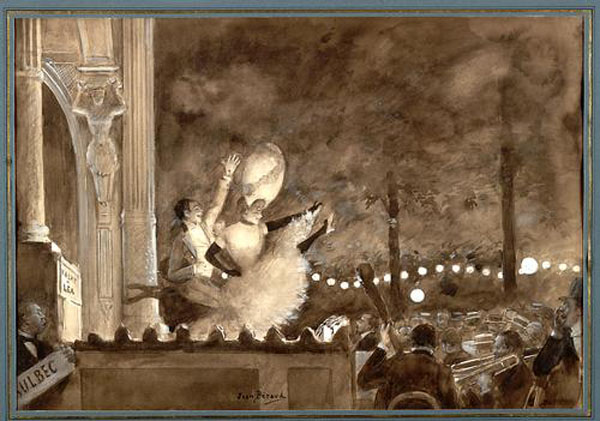
Béraud was one of several artists at the end of the 19th century who favored the café-concert as a subject. In the outdoor café-concerts of Paris, a broad urban audience could enjoy singing and stage routines along with food and drink. In this café-concert scene, Valmy thrusts up his arm in a gesture to the audience, while his partner, Léa, kicks her leg up in the cancan, an exuberant French dance. For this nighttime scene, Béraud made effective use of washes and white gouache heightening in depicting the glowing orbs of artificial light and the hidden stage lights illuminating the performers from below.
Women Skating
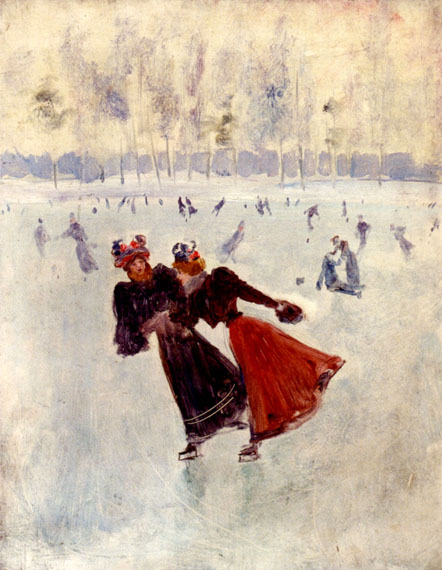
Young Parisienne
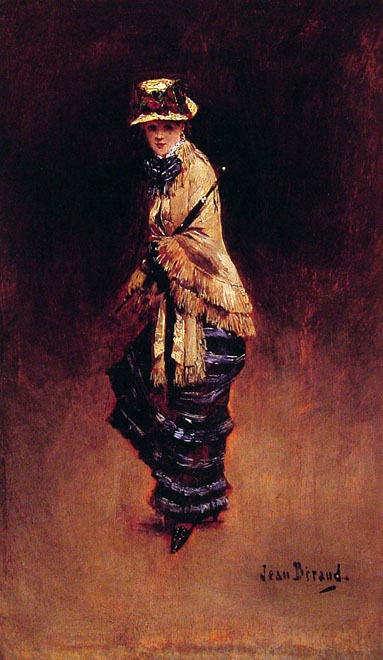
Source: Jean Beraud - Online
Source: Art Renewal Center
This page is the work of Senex Magister
Return to Pagina Artis
Return to Bruce and Bobbie's Main Page.





















































































